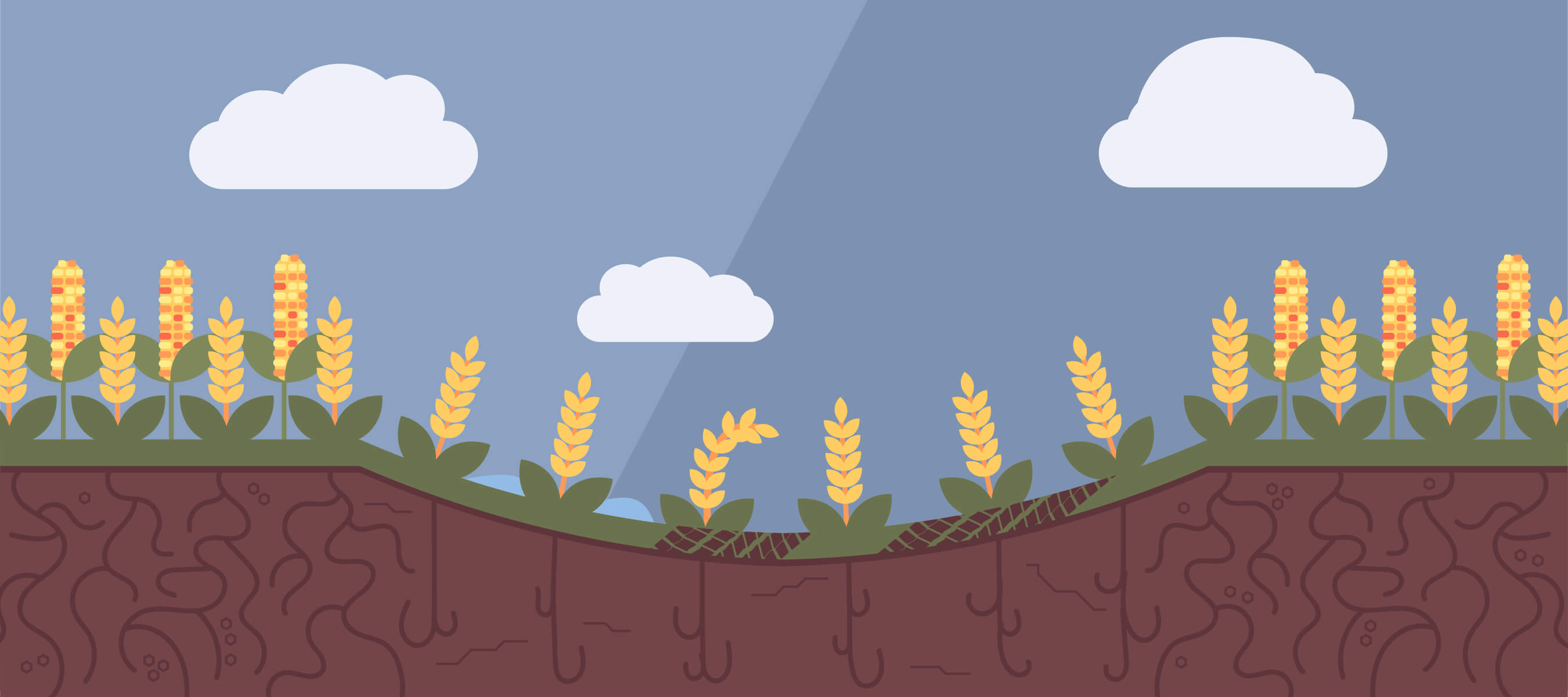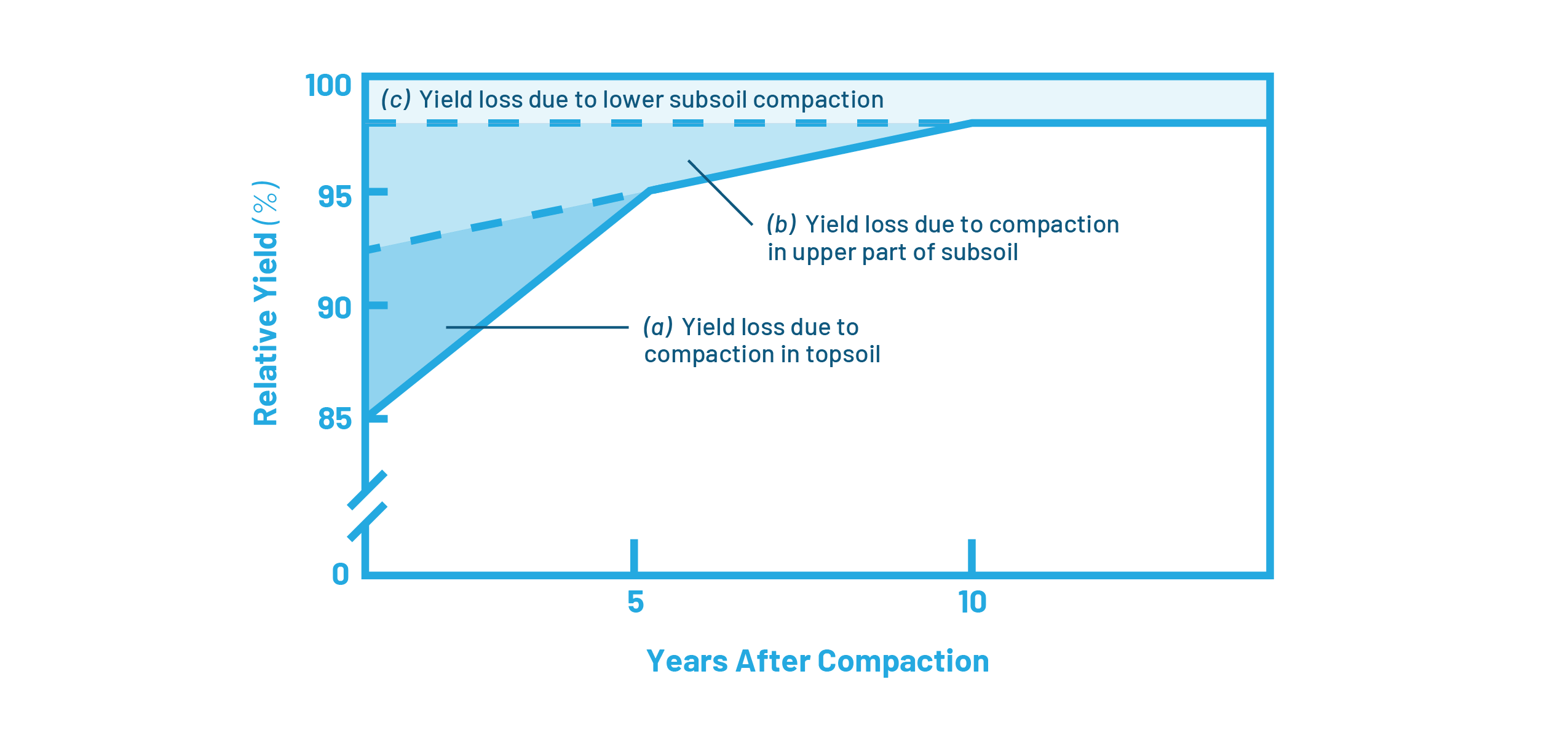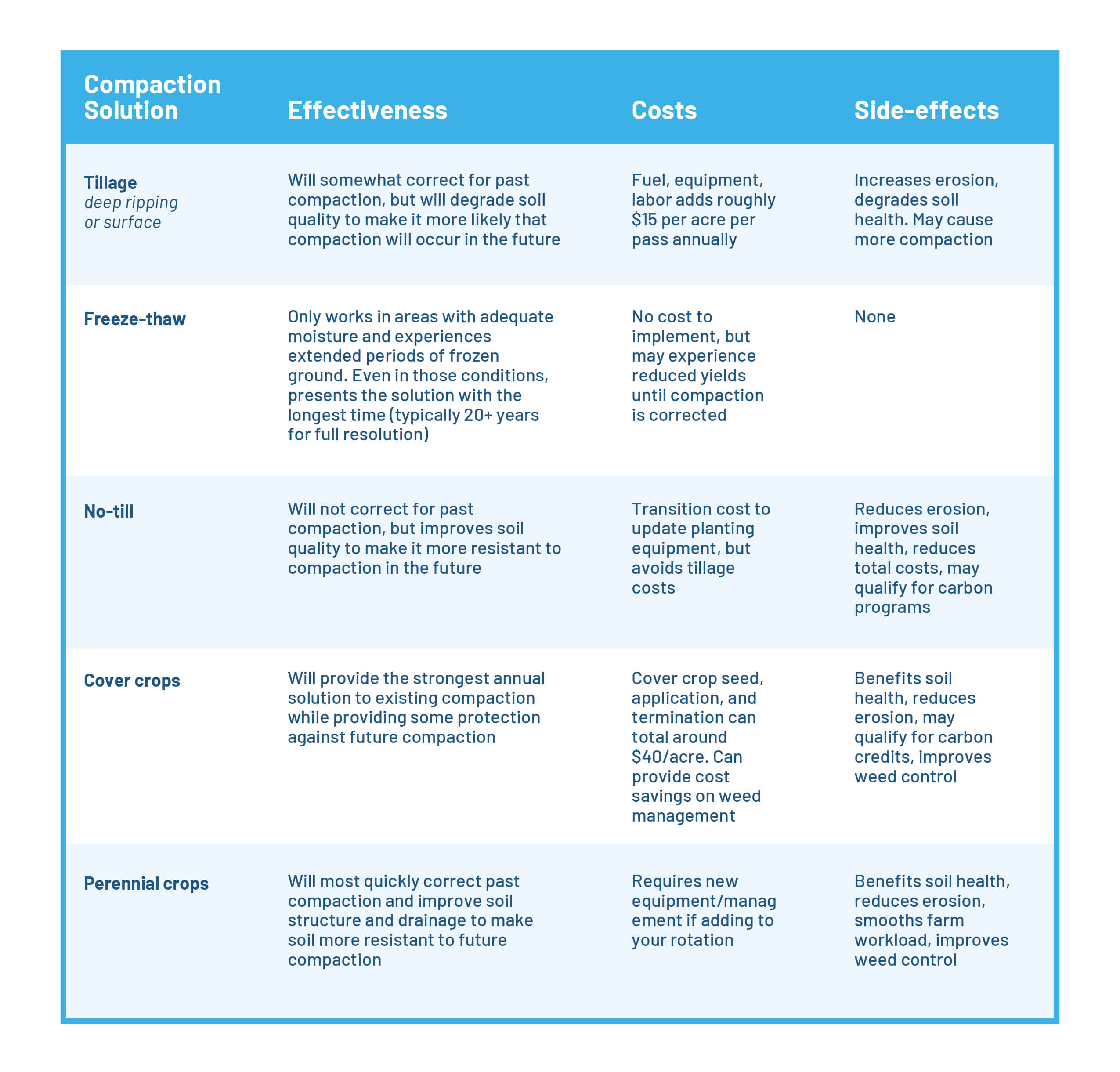Compaction: Causes, signs, solutions
by Ryan Stockwell
Surface and subsurface compaction can significantly reduce yields. Simple steps to solve compaction can provide additional benefits including improved disease management, field accessibility, and drought tolerance.

Anyone who has thought about their retirement fund understands the long term impact of a slight change in management costs. A fund with an expense ratio of 1.5% sounds small, even compared to a fund with an expense ratio of .2% sounds like only a 1.3% difference. But over time, that difference can add up to thousands of dollars. In much the same way, compaction can cause increased yield loss, over time, resulting in thousands of dollars of lost income and increased challenges.
So just how extensive is the problem of soil compaction? No one knows for certain, because good weather and growing seasons can mask a compaction issue. But anyone driving around the countryside can easily identify many of these symptoms of either surface compaction or subsoil compaction:
- Tire ruts/lug marks/track depressions
- Surface crusting
- Poor infiltration, standing water
- Soil smearing/ribbons during tillage or planting
- Poor root growth or angular roots (J or L roots)
- Lodged crops
- Slow or uneven plant germination or emergence
- Crops more susceptible to nutrient deficiencies (iron deficiency chlorosis and nitrogen deficiency, for examples) and herbicide injury
As you can see from the list; compaction exhibits itself in many ways, often accentuating or mimicking other agronomic challenges. If you experience any of these issues, you likely have some form of surface and/or subsoil compaction. Generally, fields with short rotations and heavy tillage are significantly more likely to experience compaction. Studies show fields experiencing compaction will experience around a 15% yield loss in the year following, but will continue to experience yield losses for up to 10 years or more.

Source: https://extension.psu.edu/effects-of-soil-compaction#:~:text=Without%20recompaction%2C%20yield%20losses%20decreased,compaction%2C%20can%20be%20considered%20permanent
So how can we solve past compaction and avoid creating future compaction problems? Generally, farmers have five options:
- Tillage
- Freeze-thaw
- No-till
- Cover crops
- Perennial crops
When considering these options, it is important to consider effectiveness (how well the solution solves existing compaction and/or reduces the chance of future compaction), costs, and side effects.

Having a farm perform at maximum productivity will require identifying and addressing compaction issues. Tillage may provide a minimal to moderately effective short term benefit, but reaching high profitability and productivity will require building up soil to become compaction resistant. To achieve that level, no-till, cover crops, and for those with the right equipment and markets, perennial crops will be necessary. Luckily, those practices have multiple additional benefits, from improved fertilizer efficiency to reducing nitrogen fertilizer to generating carbon credits.
By Ryan Stockwell, Grower Engagement Senior Manager and Wisconsin farmer
Citations
-https://extension.psu.edu/effects-of-soil-compaction
-https://www.agry.purdue.edu/soils_judging/new_manual/ch6-compaction.html
-https://extension.umn.edu/soil-management-and-health/soil-compaction#iron-deficiency-chlorosis-%28idc%29-1147265
This article may include information from third-party sources or other information that Indigo may not independently verify. Carbon quantification methods, processes and understandings are in their nascency and subject to change and continuous development. The information contained herein is for general informational purposes only and may be based on generally applicable assumptions that may not be applicable to any individual operation. Actual results may differ among growers and farms based on a large number of variables. Each operation should independently consider the financial implications and all potential risks and benefits of the use of any agronomic practice. Any payments under Carbon by Indigo are subject to multi-year vesting and are contingent on continued long-term maintenance of regenerative agricultural practices and soil carbon levels. All Carbon Credits generated are subject to buffer pool holdbacks required by third-party crediting; participants will not receive payments for such holdback. Neither Indigo nor its representatives or affiliates makes any representations, warranties or guarantees as to any specific outcomes (agronomic, financial or otherwise) in connection with any recommendations, calculations or predictions. Terms, conditions, limitations and eligibility requirements apply. See program agreement for additional details regarding Carbon by Indigo.
Farmers like you are getting paid to implement practices that improve soil health. With skyrocketing input costs, see how covers help.
You might also be interested in:
Neither Indigo nor any of its affiliates makes any representations, warranties or guarantees as to any specific results or outcomes, including, without limitation, with respect to soil health outcomes or any minimum amount of greenhouse gasses sequestered or number of carbon credits generated. Participation in Carbon by Indigo is subject to the terms, conditions and limitations of the program contained in the applicable enrollment agreement. Any payments under Carbon by Indigo are subject to multi-year vesting and are contingent on continued long-term maintenance of regenerative agricultural practices and soil carbon levels. All Carbon Credits generated are subject to buffer pool holdbacks required by third-party crediting; participants will not receive payments for such holdback. Not available in all areas.
500 Rutherford Ave, Boston, MA 02129 | 844.828.0240 | info@indigoag.com